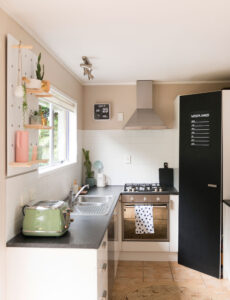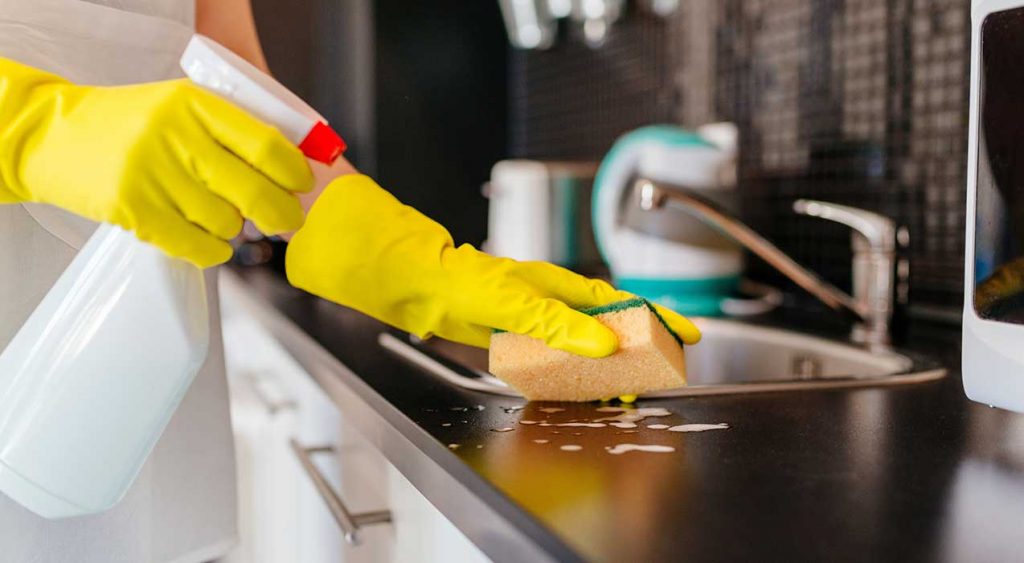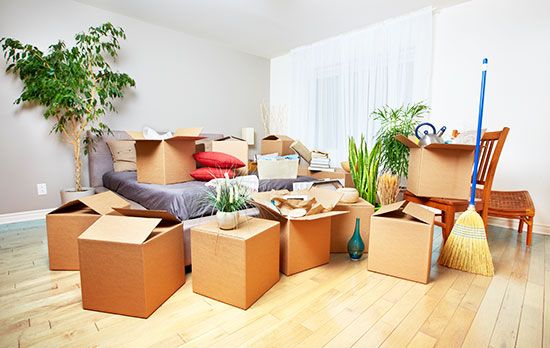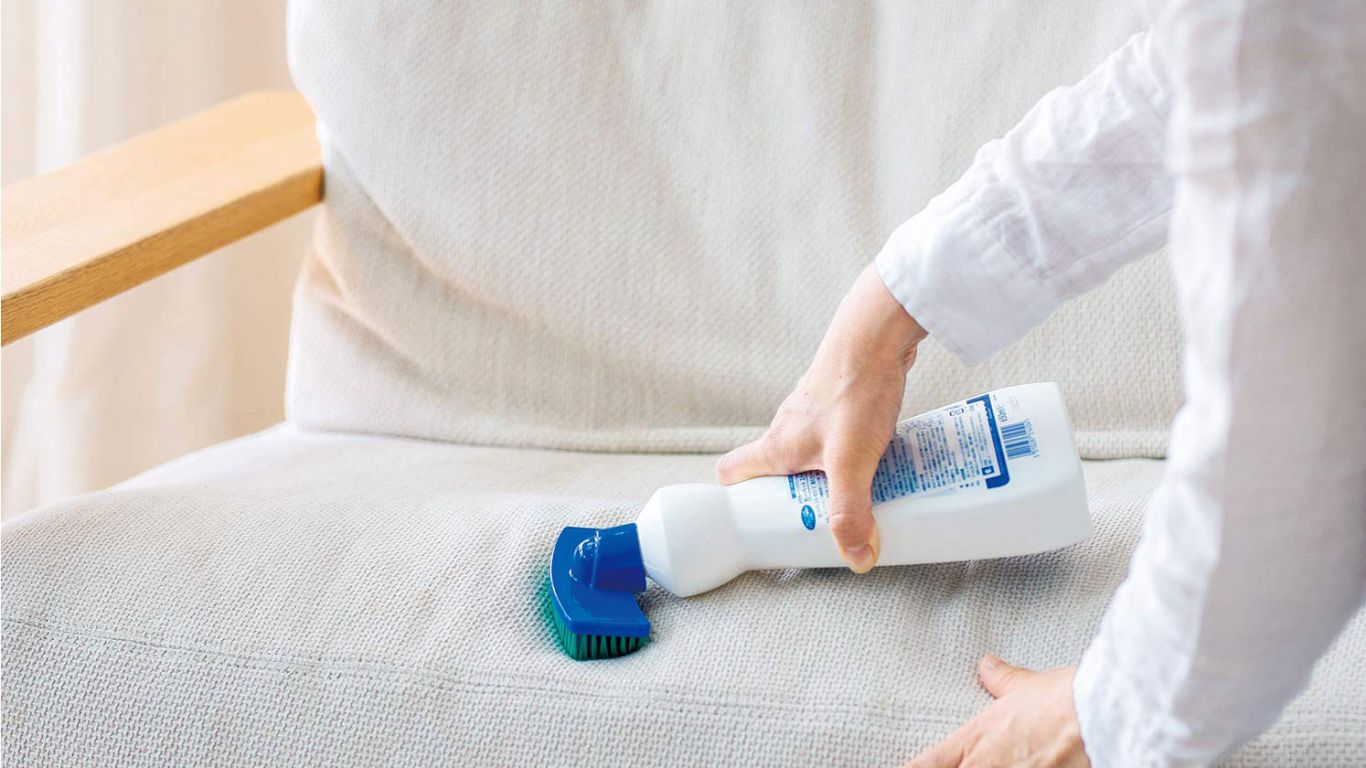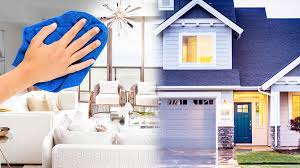How Much Does It Cost to Hire a House Cleaning Service?
With many people leading busier lives than ever before, finding time for traditional chores like house cleaning can be a challenge. Fortunately, there are plenty of professional house cleaners who will be happy to come into your home and take care of the cleaning for you. They handle everything from vacuuming the rooms and doing laundry to washing the windows.
House cleaning costs vary depending on numerous factors like the home size and the level of cleaning required. The national average is between $150 and $250 for this service, with most homeowners paying $219 for a standard one-time clean of a 2,000-square-foot home.
House Cleaning Cost Calculator
The cost to clean a house is determined by several factors. The first is whether it’s a one-time cleaning, or set up on a recurring plan where you can expect a volume discount. House cleaning prices are often estimated on a square-foot basis, although certain types of rooms may cost more than others. Some cleaning services also provide extra levels of detail, such as organizing or touching up appliances, and may cost more. If you’d like an estimate for house cleaning, try our house cleaning cost calculator.
House Cleaning Cost by Type of Service
House cleaning can be divided into two main types – one-time cleaning and recurring cleaning. One-time cleans are one-off sessions where a house cleaner comes into your home, carries out the necessary cleaning tasks, and then leaves. A recurring clean is when you arrange with a cleaner or cleaning company to come back on a weekly, biweekly, or monthly basis. You usually receive a discount if you opt for a recurring service because there is generally less work to do each time.
One-time Cleaning
One-time cleaning is usually more expensive than recurring cleaning because there is often more work for the cleaners to do. Also, they will be less familiar with your home’s layout and your needs. The table below shows average prices for different types of one-time cleaning.

How to Clean a House Professionally Checklist
Those who professionally clean homes provide a valuable service to people who do not have the time or skills to clean their home. Since professional cleaners have far stricter standards for cleaning, they need to remember certain cleaning tasks that the average homeowner might not even consider
A residential cleaning checklist typically involves more detailed work than cleaning in a commercial environment. Cleaners need to make sure that each part of the house is thoroughly cleaned from top to bottom. Before getting started on a residential cleaning checklist, professionals need to make sure they have a full complement of cleaners, rags, mops, vacuums, cleaning buckets, and scrubbing pads. This how to clean a house professionally checklist outlines all the basic tasks that a professional will need to complete.
- Dust all surfaces, including all furniture, appliances, baseboards, chair rails, blinds, window frames, fans, stair railings, pictures, mirrors, and light fixtures.
- Spot clean switches, outlet covers, cabinet fronts, and doors.
- Vacuum any carpets or rugs.
- Sweep or vacuum hard floor surfaces and damp mop them.
- Empty all trash containers.
- Remove any buildup and clean toilets on the inside and out.
- Clean and disinfect all countertops, showers, sinks, and tubs in the bathrooms..
- Clean and disinfect kitchen counters, sinks, range hoods, tables, microwave interiors, and appliance exteriors.
- Clean and shine mirrors, glass doors, and other glossy surfaces.
- Do brief, basic tidying upon request.
- Change sheets and make beds upon request.
Summer Cleaning Tips
In the summer time, there may be a few extra things to do in addition to following your basic house cleaning chart. Extra cleaning occurs because the heat and moisture of summer can cause additional grime to build up, so it is helpful to know some summer cleaning tips. Pay special attention to the floors, since many homes will have people tracking in pool water, mud, or dust. If mud is tracked into the home, brush away dry mud with a stiff brush before gently sponging the remaining stain. Many customers prefer light citrus scents during the hot months, so you can switch cleaners just to change it up a little. Some will be interested in paying extra for cleaning outdoor areas, so we will discuss cleaning deck furniture with clients during our quote process.
Christmas Cleaning Checklist
It is normally a good idea to deep clean the house at least a few times each year, and Christmas is an excellent time to do some extra cleaning the home. Your how to keep a clean house schedule will change a little when you get ready for Christmas cleaning. Follow this checklist to make the house is sparkling clean and full of Christmas cheer for all holiday guests.
How to Create a Cleaning Schedule That Works For You
It is one of those things that we all need to do, but never really want to do. In fact, over the years I have received more reader questions about cleaning, organizing, and decluttering than I could count. It seems that we all want to have a neat and orderly home, but not all of us know exactly how to get there, and certainly not as fast as we’d like to.
Because let’s face it–life is busy, and none of us want to spend all our time cleaning. Even while every single person is home right now because of the COVID-19 pandemic, I’m sure it feels like there’s even more to clean, but you still shouldn’t have to spend all your time doing so. So let’s figure out how to tackle it with a plan.
How to Create a Cleaning Schedule That Works For You
First, for those of you who are unsure of what a cleaning schedule is, let me break it down for you. A cleaning schedule is basically just a daily, weekly, or monthly plan for how you will clean your house. It can be as simple as one main task per day or as complex as a spreadsheet that accounts for every single housekeeping task that needs to be done over the course of a year.
If the idea of creating any sort of cleaning schedule sounds overwhelming, try not to worry—I promise it is not as bad as it sounds. In fact, as you will see below, you can do it in three easy steps! The point of a schedule is not to make you feel guilty or to make you have more to do, but to actually relieve guilt and to create a routine that gives you more freedom and less stress. Knowing that you have a workable, manageable plan to tackle those sticky sinks and dusty dressers makes the idea of cleaning house seem a lot less overwhelming in the long run.
Create a Master Task List
Before you can decide when to clean you must first know what to clean, and how often. Thus before you can create a cleaning schedule that works for your life and your schedule, you need to assess your own home and cleaning needs. A cleaning schedule for a childless couple living in a 1-bedroom apartment will look very different from a cleaning schedule for a homeschooling mom of five living in a 4-bedroom house!
Pick the Best Plan for YOU (Choose ONE)
The next thing you need to do is figure out what sort of cleaning plan will work best for your life and your schedule. Are you the kind of person who wants to do a little every day, or would you rather tackle it all at once so that you don’t have to think about it for the rest of the week? Do you work full time or are you home during the day? Do you have young children at home or are your kids old enough to help shoulder some of the responsibility?
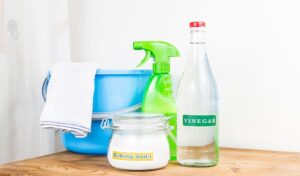
Building Cleaning and Maintenance Industry Guide
Defining Cleaning and Maintenance
Sales tax applies to building cleaning and maintenance, disinfecting, and exterminating services. However, sales tax does not apply to building repair services.
Buildings and Structures
A building or structure includes the building or structure itself and all improvements or fixtures annexed to the structure that are both:
Integrated with and of permanent benefit to the building or structure
Cannot be removed without substantial damage to itself or the building or structure
Sales – Building Cleaning and Maintenance
Building cleaning and maintenance, disinfecting, and exterminating services are taxable. Building cleaning and maintenance includes both interior and exterior cleaning of commercial and residential buildings, homes, and apartments to keep them in good upkeep or condition. It does not include repairs to buildings.
Taxable Services
Carpet cleaning
Ceiling tile cleaning
Chimney cleaning
Disinfecting, exterminating, and pest control
Duct cleaning
Elevator cab cleaning
Floor cleaning, vacuuming, and waxing
Furnace cleaning
Gutter cleaning
Janitorial services
Junk removal services
Lighting maintenance
Office cleaning
Parking ramp cleaning
Pressure washing a building
Restroom cleaning, deodorizing, and sanitizing
Smoke odor counteracting
Swimming pool, spa, and hot tub cleaning, maintenance, and disinfecting
Swimming pool, spa, and hot tub opening and closing services
Venetian blind cleaning
Ventilation system cleaning
Window washing
Wall and woodwork cleaning
Water removal (flood or fire damage)
Nontaxable Services (if separately stated on the invoice)
Cleaning underground tanks
Insulation removal
Maintenance of outdoor parking lots and outdoor mall areas
Painting and wallpapering
Repairs to real property
Repairs to mechanical systems
Sandblasting exteriors of buildings
Septic tank pumping
Services performed by employees for an employer
Services provided by one business entity for another when one of the entities owns at least 80% of the other
Sewer and drain cleaning
Snowplowing and removal
Washing dishes, dusting knick-knacks, making beds, picking up, and room straightening
The Ultimate Cleaning Checklist
This cleaning checklist includes all of the essential chores to tackle, according to the pros. Follow the house cleaning schedule loosely or to a T—either way, you’ll be pleased with the progress and you’ll enjoy a cleaner home every day.
Daily
Make your bed
Wipe down bathroom counters after getting washed up morning and night
Empty/load dishwasher
Take out trash
Do a nighttime sweep to put toys, loose papers, and other stray objects in their place
Wipe down counters, table, and sink
Weekly
Dust all hard surfaces
Vacuum and/or mop floors
Wipe down appliances
Wipe down and disinfect countertops
Wipe down mirrors
Scrub and disinfect the kitchen sink
Scrub and disinfect toilets
Clean and scrub showers and tubs
Change and launder sheets and towels
Toss any food that has expired
Monthly
Vacuum upholstery
Wipe out and disinfect wastebaskets
Wipe down and disinfect doorknobs, light switches, and TV remotes
Dust ceiling fans and vents
Dust moldings
Scrub stovetop, including burner grates
Wipe down kitchen cabinets
Clean and deodorize the microwave (heat a mug of water with a lemon wedge, then wipe down)
Every Three to Six Months
Launder or hand-wash curtains
Vacuum mattress (every three months) and flip or rotate 180 degrees (every six months)
Clean and condition leather and wood furniture
Clean blinds
Vacuum drapes and fabric shades
Dust lampshades
Wipe down baseboards
Shake out rugs
Scrub grout
Wash windows inside and out
Clean and degrease the stove hood
Polish stainless steel appliances
Clean refrigerator and freezer interiors
Clean and descale coffee maker
Every Six to 12 Months
Clean oven interior
Wash or dry clean slipcovers
Wash or dry clean pillows
Wash or dry clean comforters
Empty and clean cabinet and pantry shelves
Vacuum or dust refrigerator condenser coil
Wash and dry stove hood filter
Every Year or So
Have rugs professionally cleaned
Pull out large appliances and furniture to clean behind and underneath
Wipe down walls
Wash window screens
Clean dryer duct
Have upholstery and drapes professionally cleaned (every two years)
Have gutters professionally cleaned.

